Indiana flower farm builds high tunnel with help from EQIP

Singletree Farm has added multiple months to their growing season and improved the quality of their flowers after working with Indiana NRCS to build a high tunnel through EQIP
It is the decision the owner of any small, start-up business hopes to eventually face. When is it time to go all in, quit your other jobs and focus your full attention on the business?
For Kate Friesen and Scott Kempf, that decision came in 2020. At the time, Kempf was working a series of odd jobs in construction and on farms while Friesen was working at a local flower shop. But what they really wanted to do, where their passion truly laid, was on Singletree Flower Farm, the micro-farm they had started in Goshen, Indiana.
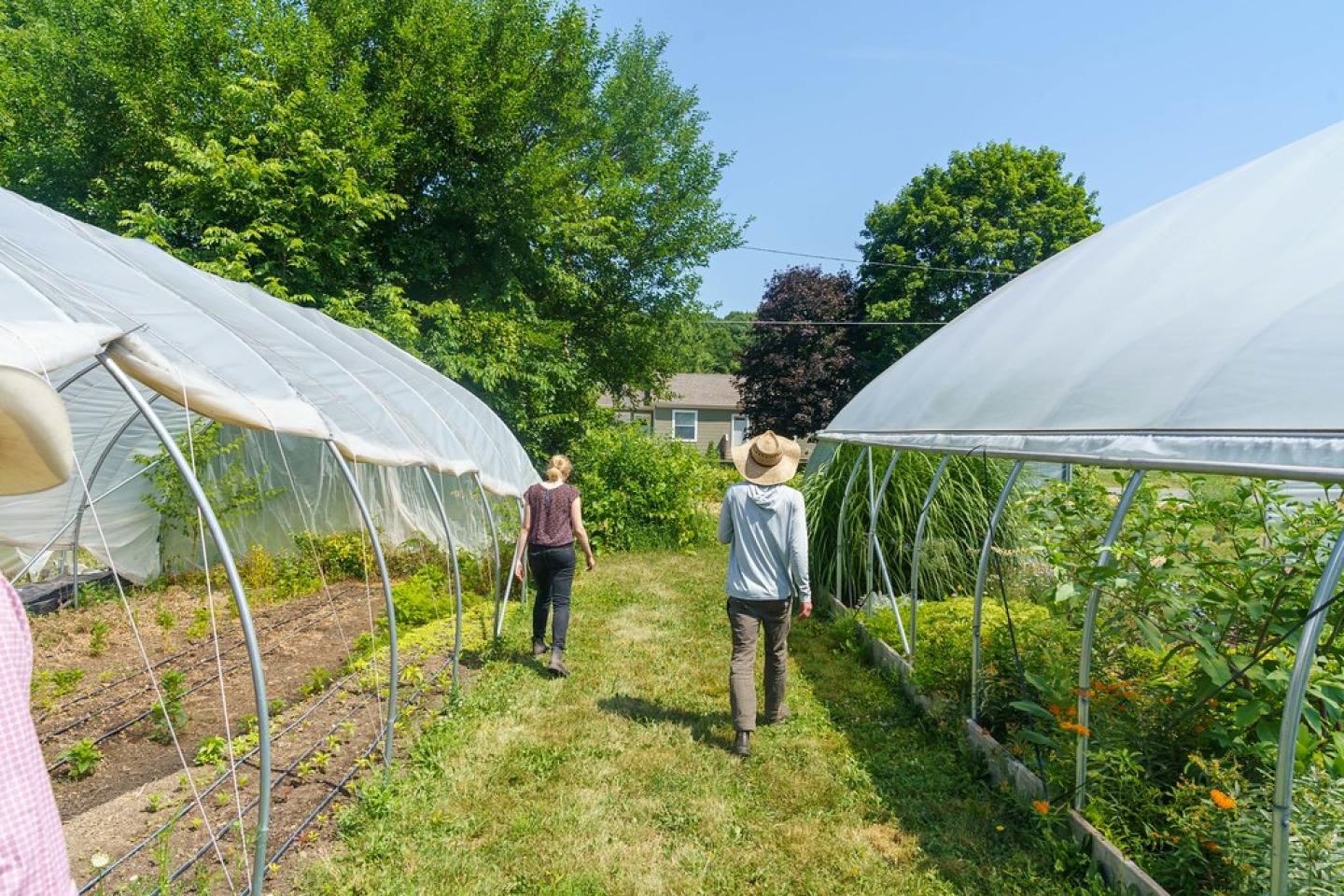
Farming together had been the dream since the early days of their relationship, but taking the plunge and relying solely on the income from the farm was a terrifying prospect as it would be both of theirs first venture into life as full-time farmers.
Friesen entered college as an English major unsure where her life would lead, until her cousin invited her to Idaho to help them on the farm. On their mixed operation that included a conventional farming operation and a vegetable farm with a community supported agriculture (CSA) program, she found her passion.
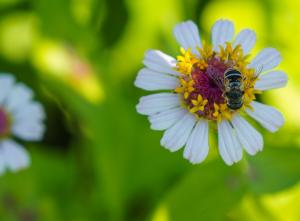
Kempf on the other hand came to farming through mission work. After college he spent a year volunteering at a food bank in Arizona through a program at his church. There, he fell in love with the physical labor and joy that could be found in farming.
“(It was) the first time I had exposure to tending something and taking care of something and watching it grow. So, that was what piqued my interest” Kempf said.
As they dated and eventually got married, they bonded over their shared passion and started dreaming of owning and running a farm together. In those early days the farm they envisioned was more vegetable focused, but after Friesen started working at a local flower shop and running a flower farm, their vision began to change.
In 2017 she’d just left a job as an assistant farm manager at a vegetable and livestock operation when a local flower farmer called and asked Friesen to run the farm while she focused on opening a florist shop. There, Friesen learned the ins and outs of growing flowers while also spending time working in the shop and learning about flower arrangements and the design aspect of the job.
While the process of growing flowers was similar to vegetables, there was still a steep learning curve including learning the perfect time to harvest the flowers so they would look their best in the bouquet and not waste their beauty in the field.
By 2019 Friesen and Kempf had started to venture out on their own and were growing flowers in a variety of plots all over town while learning how to grow flowers to maximize their value and run a growing business.
“We started small in other people's backyards, basically, and our side yard,” Friesen said. “People were letting us grow for free in their yards. So, we were kind of all over town in these little flower patches.”
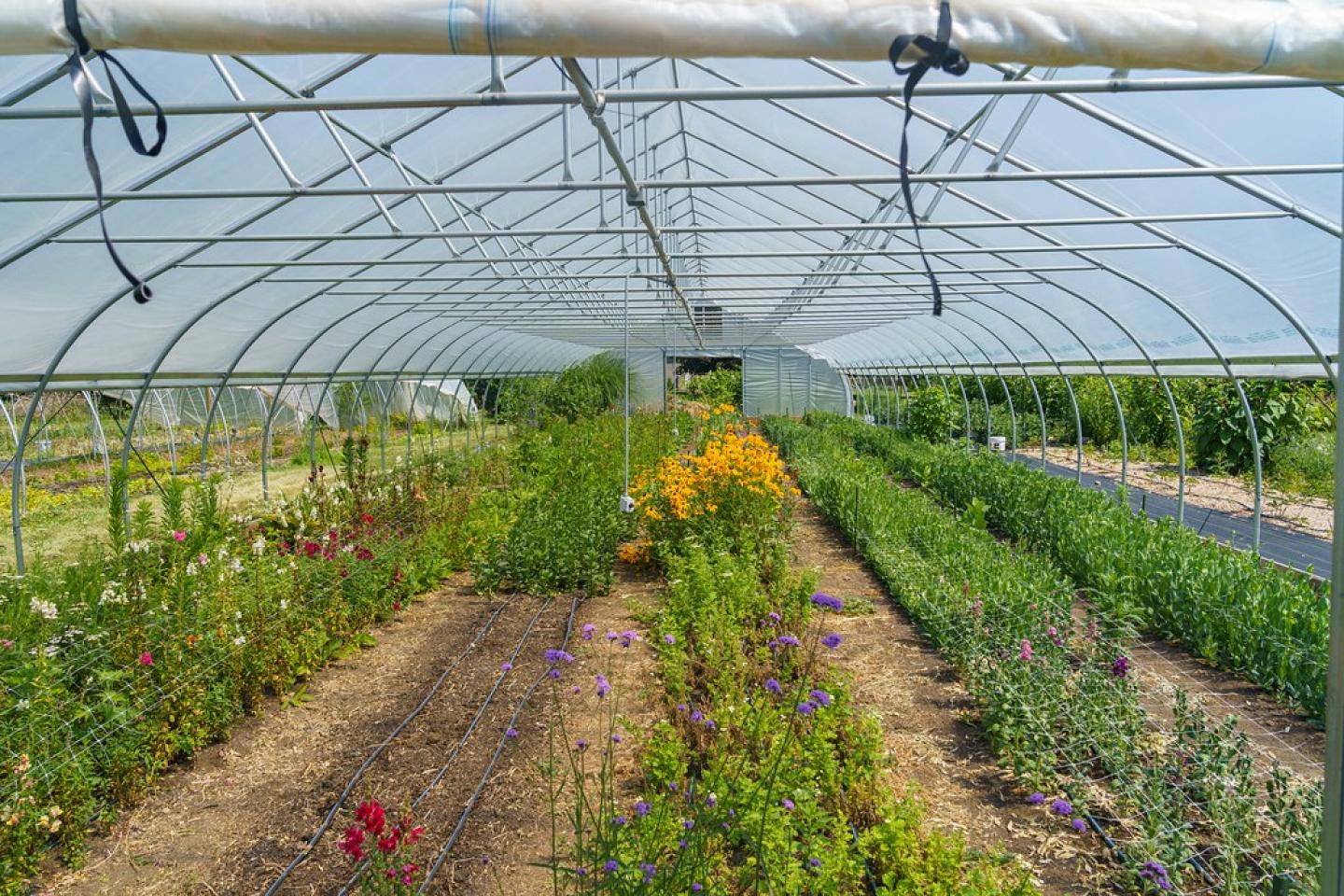
That first year they sold about 90% of their flowers to the shop where Friesen worked, with the relationship serving as “a farm incubator” and safety net. The set-up enabled them to experiment, make mistakes and learn the do’s and don’ts of flower growing before fully venturing out on their own.
Then in 2020, the owner of the shop moved to Pennsylvania, the COVID-19 pandemic hit and Friesen and Kempf decided it was time to sink or swim on their own.
They continued growing some flowers in plots throughout town, but the majority of their operation relocated to third of an acre plot outside their new homestead. They tilled and tarped the area to get it ready for planting, installed smaller caterpillar tunnels and started growing.
They went into 2020 expecting weddings and other large events to be a major portion of their business before the pandemic led to widespread cancelations. But they still managed to find success through CSA subscriptions, farmers’ markets and other direct to consumer sales as they began transitioning away from a largely wholesale business model.
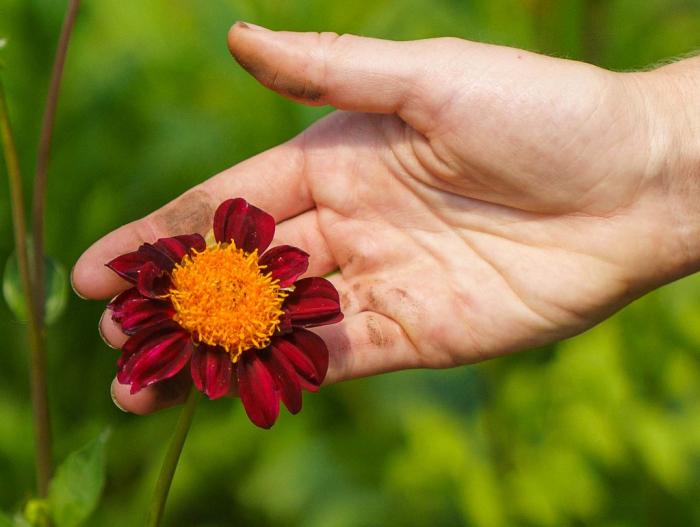
As the 2021 growing season came around and the world started to reopen, they left the various plots throughout town behind, expanded their growing area at the homestead to about three-quarters of an acre and began looking for ways to further grow their business.
That search led them to USDA’s Natural Resources Conservation Service (NRCS) and the Environmental Quality Incentives Programs (EQIP). Initially, Friesen said, they reached out to NRCS for information about removing invasive species and addressing erosion issues along the bank of the Elkhart River, which abuts their backyard. But through conversations with their local district conservationist and other local farmers, they learned that NRCS had assistance available that could directly help their expanding flower farm.
They applied for and received assistance through EQIP to install a high tunnel and plant a hedgerow on their farm. As beginning farmers, they received priority funding consideration and were eligible for advanced payments and a higher payment rate to help them install the practices. The application process was “super easy” Kempf said as their local district conservationist helped them through the process and, they freely admitted, the assistance enabled them to add a high tunnel considerably earlier in the life of their farm than they could have without help.
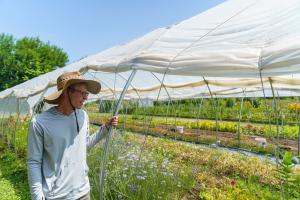
The installation of the high tunnel as been a “huge boost” to the farm, Kempf said, because of the positive impact it has on the quality of the flowers and the length of the season. With the tunnel they are able to start as early as March and harvest flowers as late as January. They are also experimenting with overwintering a portion of the crop to gain an even earlier jump in the spring.
When combined with the field, they can now make use of three different growing cycles in a single year creating multiple revenue streams to support their farm.
While the field crops reach their peak in late summer, the farm’s busiest times are early spring and fall for weddings. With the tunnel they are able to start flowers early enough for them to reach their peak blooming stage in time for those early spring weddings. They then utilize the field to meet customer’s demands during the summer and flip the tunnel to a new crop to utilize in the fall.
The tunnel also gives them better control over the environment, paying dividends in the quality of flowers they can produce. The wind protection offered by the tunnel allows the plants to grow taller and straighter, and in an industry where the longer and straighter the flower’s stem the higher its value, the tunnel is invaluable to their bottom line. It also enables them to control how and when the flowers are watered extending their life.
“I'm getting 30% taller plants in the high tunnel than I do in the field,” Friesen said. “And it keeps the rain off. In a rainstorm, if the rain sits on the flowers ,it'll rot the flower head. So, if I keep the water off, the quality is a lot higher too.”
The multiple benefits derived from the tunnel also meant that part way through the 2022 growing season it had already paid for itself, Kempf said.
And while the hedgerow is still in its infancy, the long-term goal is for it to serve as a windbreak, further improving the flowers’ ability to grow tall and straight. There is also the chance the plants in the windbreak, which include dogwood, persimmon, crabapple, red bed, witch hazel, nannyberry and viburnum, can provide additional value through inclusion in bouquets or from the fruits they produce.
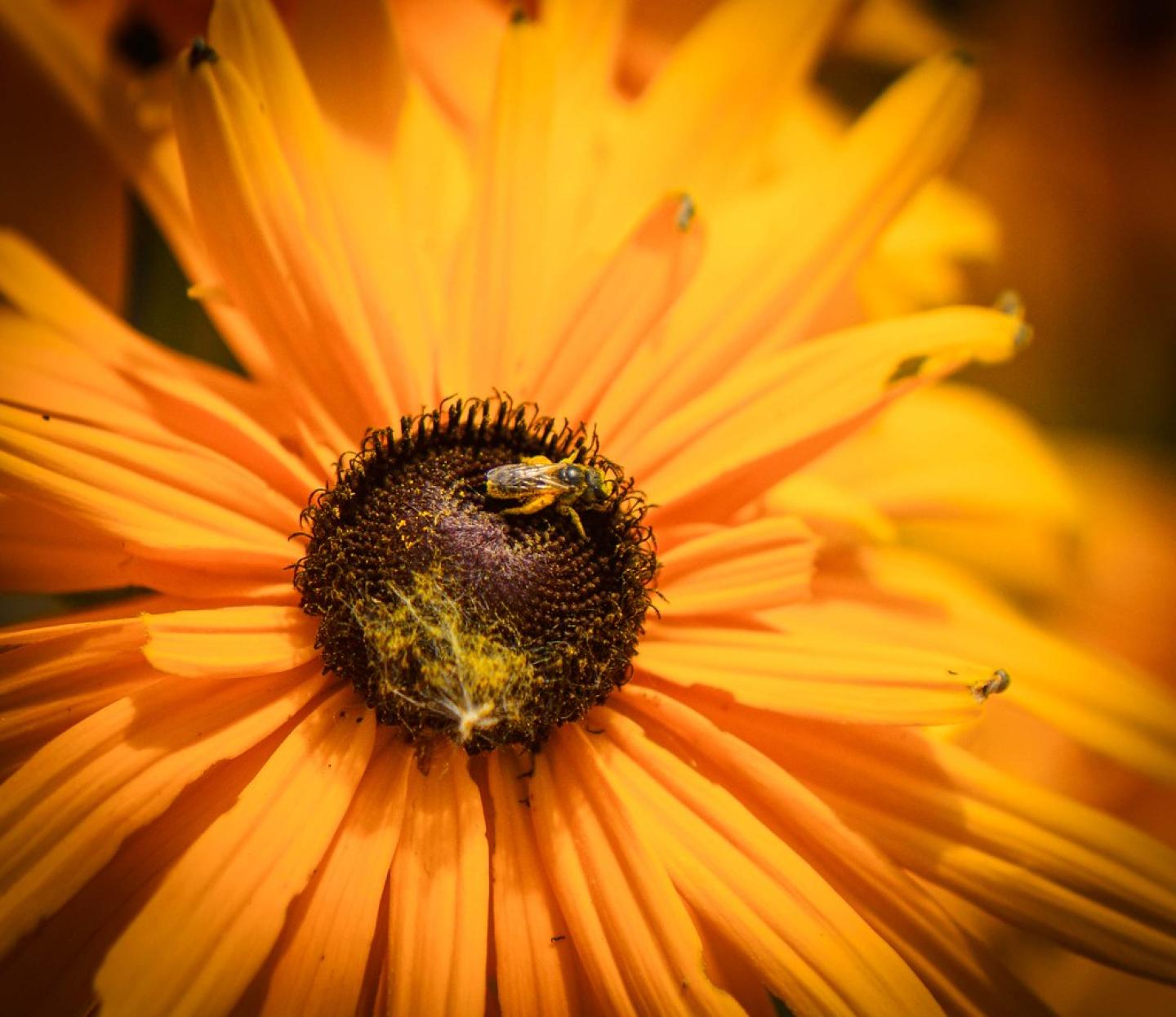
With two full-time growing seasons under their belt, there is no looking back or second guessing about leaving behind their off-farm jobs to focus exclusively on Singletree Farm. Their CSA now includes more than 100 members, and they provided flowers for 22 weddings in 2022 all from less than an acre of growing space. In only three years they have gone from selling about 90% of their flowers wholesale to selling 95% of them directly to customers.
Even as the business has grown, much of their day to day has remained the same, though. They have no heavy equipment and still tend to the farm by hand, planting, harvesting and growing together surrounded by an abundance of color and blooming flowers in a dream come true.
Additional Information
Small/Urban Farming - Indiana
NRCS serves all agriculture – large to small, conventional to organic, rural to urban. As American agriculture continues to grow in new directions, NRCS conservation assistance is growing along with it.
Learn MoreEnvironmental Quality Incentives Program - Indiana
The Environmental Quality Incentives Program (EQIP) provides financial and technical assistance to agricultural producers and non-industrial forest managers to conserve natural resources while strengthening their operations.
Learn MoreORGANIC AGRICULTURE
Organic farming is an ecologically-based system that relies on preventative practices for weed, insect and disease problems, uses nontoxic methods to manage problems if they arise, and improves the natural resources of the land, including soil and water quality.
INDIANA NRCS HOMEPAGE
For more information about NRCS programs offered in Indiana and how experts throughout the state can help you address natural resource concerns on your land, visit the Indiana NRCS homepage.

